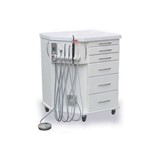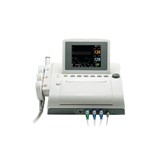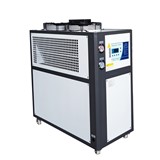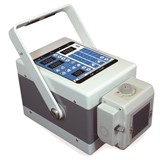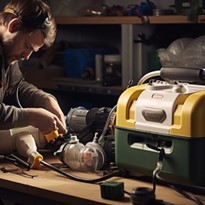Portable suction machines are critical medical devices used in various healthcare settings to remove respiratory secretions and maintain airway patency.
Ensuring the safe and effective use of portable suction machines is paramount for healthcare providers to prevent complications and promote patient well-being.
This guide aims to provide comprehensive insights and guidelines on the proper usage and safety considerations associated with portable suction machines.
By adhering to these protocols, healthcare professionals can enhance patient comfort, minimize risks, and optimize the benefits of suctioning procedures.
I. Proper Techniques for Suctioning Patients
A. Positioning the patient for suctioning
- Correct patient positioning is essential to facilitate effective suctioning.
- Place the patient in a semi-Fowler's position or as recommended by the healthcare provider, ensuring proper head support and alignment.
- Adequate positioning helps maintain a clear airway, making suctioning more efficient and comfortable for the patient.
B. Inserting the suction catheter correctly
- Carefully select an appropriately sized suction catheter based on the patient's age and condition.
- Prior to insertion, ensure the catheter is clean, lubricated, and free from any defects.
- Gently insert the catheter into the patient's airway until resistance is felt or until it reaches the predetermined depth, depending on the patient's age and clinical guidelines.
- Avoid excessive force to prevent trauma to the airway tissues.
C. Gentle and controlled suctioning techniques
- Employ a slow and controlled suctioning technique to minimize the risk of tissue damage and hypoxia.
- Limit each suction pass to 10-15 seconds to prevent prolonged oxygen deprivation.
- While withdrawing the catheter, apply intermittent suction by covering and releasing the suction control port to prevent excessive suctioning.
- Maintain vigilant monitoring of the patient's vital signs and response throughout the procedure.
II. Ensuring Patient Comfort and Safety
A. Minimizing discomfort during suctioning
- Positioning: Ensure the patient is in a comfortable and relaxed position before suctioning begins.
- Communication: Communicate with the patient and explain the procedure to alleviate anxiety.
- Pre-suction assessment: Assess the patient's respiratory status and need for suctioning to minimize unnecessary interventions.
- Use of lubrication: Apply a water-based lubricant to the suction catheter to reduce friction and discomfort during insertion.
- Gentle insertion: Insert the catheter slowly and gently to minimize irritation to the airway.
B. Monitoring patient response and adjusting as needed
- Continuous assessment: Continuously monitor the patient's vital signs, including heart rate, respiratory rate, and oxygen saturation, during suctioning.
- Pause when necessary: If the patient experiences significant distress, pause the procedure to allow for recovery.
- Adjusting suction pressure: Ensure that the suction pressure is appropriate for the patient's condition and adjust it as needed to avoid excessive suction force.
- Frequent suction passes: Limit the number of suction passes to prevent over-suctioning, which can lead to patient discomfort and potential complications.
C. Avoiding tissue damage and trauma
- Proper catheter size: Select an appropriate catheter size to avoid trauma to the airway and reduce the risk of tissue damage.
- Limit suction duration: Minimize the duration of suctioning to prevent mucosal damage and irritation.
- Avoid excessive force: Do not apply excessive force when suctioning, as this can damage sensitive airway tissues.
- Regular equipment inspection: Ensure that suction catheters are in good condition to prevent sharp edges or defects that could cause tissue trauma.
- Documentation: Maintain accurate records of suctioning procedures, including any signs of trauma or discomfort, for future reference and patient care continuity.
III. Steps to Set Up and Operate the Machine
A. Assembling the portable suction machine:
- Lay out all components of the portable suction machine.
- Ensure that all parts are clean and in good working condition.
- Follow the manufacturer's instructions for assembling the machine, which typically involves connecting hoses, attaching the canister, and securing the power source.
B. Checking and preparing necessary supplies:
- Gather the required supplies, including suction catheters, sterile gloves, suction tubing, and a collection canister.
- Inspect the supplies for any damage or defects.
- Ensure that the suction catheters are the appropriate size for the patient.
C. Operating the machine effectively:
- Plug the portable suction machine into a power source or ensure that the battery is charged.
- Turn on the machine and adjust the suction pressure to the prescribed level for the patient.
- Test the suctioning function to verify that it is working correctly.
- Position the machine within easy reach but not obstructing the patient's movement or access to healthcare providers.
IV. Avoiding Cross-Contamination and Infection Control
A. Proper hand hygiene before and after suctioning:
- Wash hands thoroughly with soap and water for at least 20 seconds.
- Alternatively, use an alcohol-based hand sanitizer with at least 60% alcohol.
- Perform hand hygiene before and after every suctioning procedure.
B. Maintaining aseptic techniques during the procedure:
- Wear clean, disposable gloves while handling equipment and performing suctioning.
- Ensure that the gloves are changed if they become soiled or compromised during the procedure.
- Avoid unnecessary touching of surfaces or items that may come into contact with the patient's airway.
C. Cleaning and disinfecting the equipment:
- Follow the manufacturer's guidelines for cleaning and disinfecting the portable suction machine.
- Use appropriate disinfectants and cleaning agents that are effective against pathogens.
- Pay special attention to cleaning surfaces that are frequently touched, such as control buttons and handles.
- Regularly replace and dispose of single-use components, such as suction catheters, as per infection control protocols.
V. Monitoring Suction Pressure and Adjusting Settings
A. Understanding the importance of appropriate suction pressure
- Proper suction pressure is critical to effective suctioning.
- Inadequate pressure may result in insufficient removal of secretions or debris.
- Excessive pressure can lead to tissue damage and complications.
B. How to adjust and maintain suction pressure levels
- Begin by referring to the manufacturer's guidelines for recommended pressure settings.
- Portable suction machines typically have adjustable pressure controls.
- Use the suction pressure adjustment knob or digital controls to set the appropriate pressure level.
- It is essential to confirm that the selected pressure level matches the patient's needs.
C. Ensuring consistent and safe suctioning
- Regularly monitor the suction pressure during the procedure.
- Maintain a steady and controlled suctioning motion to prevent pressure fluctuations.
- Check for any potential blockages in the suction catheter that could affect pressure.
- If there are variations in suction pressure, take immediate corrective actions to ensure patient safety.
- Ensure that the suction pressure remains within the safe and effective range throughout the procedure
VI. Safety Precautions to Prevent Over-Suctioning
A. Recognizing Signs of Over-Suctioning
- Excessive Secretion Removal: Be vigilant if you notice an unusually high volume of secretions being removed during suctioning.
- Patient Discomfort: Pay attention to signs of patient discomfort, such as increased gagging, coughing, or distress.
- Changes in Vital Signs: Monitor vital signs closely, as over-suctioning can lead to fluctuations in heart rate, oxygen saturation, or blood pressure.
B. Strategies to Prevent Over-Suctioning Incidents
- Assessment and Planning: Prior to suctioning, assess the patient's need for suction carefully. Develop a suction plan based on the patient's condition.
- Regular Assessment: Continuously evaluate the patient's airway during suctioning. Cease suctioning when secretions are adequately cleared.
- Use of a Soft Tip Catheter: Opt for soft tip catheters to reduce the risk of mucosal trauma during suctioning.
- Avoid Frequent Reinsertion: Minimize the number of times the catheter is inserted to decrease the potential for airway irritation.
C. Adjusting Suction Settings to Prevent Harm
- Appropriate Suction Pressure: Ensure that the suction pressure settings are within safe limits for the patient's age and condition.
- Intermittent Suctioning: Instead of continuous suction, use intermittent suctioning to reduce the risk of over-suctioning and airway trauma.
- Monitor Suction Duration: Limit the duration of suctioning to 10-15 seconds per pass to prevent excessive removal of mucosal lining.
- Communication: Maintain open communication with the patient to gauge their comfort level and make adjustments accordingly.
VII. Addressing Potential Risks and Complications
A. Identifying common risks associated with suctioning
- Risk of tissue damage or injury during suctioning
- Potential for introducing infection if not done aseptically
- Discomfort or distress to the patient due to improper technique
- Risk of aspiration or bronchospasm in vulnerable patients
B. Mitigating risks through proper techniques
- Utilize appropriate suction catheter size for the patient
- Maintain gentle and controlled suctioning to minimize tissue trauma
- Ensure aseptic technique, including hand hygiene and equipment sterilization
- Use lubrication and proper angulation to reduce patient discomfort
C. When to seek medical assistance for complications
- If bleeding occurs during or after suctioning
- If the patient experiences severe respiratory distress
- In case of equipment malfunction or blockage
- If the patient shows signs of infection following suctioning
VIII. Emergency Situations and Quick Response Measures
A. Understanding potential emergencies during suctioning
- Airway obstruction due to a dislodged or blocked suction catheter
- Sudden deterioration in the patient's oxygen saturation levels
- Equipment failure or power outage during the procedure
- Severe adverse reactions, such as bronchospasm or cardiac events
B. Steps to take in case of airway obstruction or equipment failure
- Immediately remove the suction catheter and provide oxygen if the patient's oxygen saturation drops.
- Attempt to clear the airway with alternative methods like the Heimlich maneuver if needed.
- Replace or troubleshoot the malfunctioning equipment promptly.
- Stay calm and reassure the patient while taking swift action.
C. Rapid response protocols for patient safety
- Establish a clear chain of command and communication among the healthcare team.
- Activate the facility's emergency response system.
- Administer appropriate treatments or interventions based on the specific emergency.
- Document the incident thoroughly for later analysis and reporting.
IX. Training Healthcare Providers on Safe Usage
Healthcare providers must undergo formal training to ensure the safe and effective usage of portable suction machines. This training is crucial for maintaining a high standard of patient care and minimizing the risks associated with suctioning procedures. Here are key aspects of training healthcare staff on safe usage:
A. Importance of Formal Training for Healthcare Staff
- Formal training ensures that healthcare providers have a solid understanding of the principles and techniques related to portable suction machine usage.
- It helps in building competence and confidence among healthcare staff, which is essential for providing optimal patient care.
- Proper training reduces the likelihood of errors, complications, and adverse events during suctioning procedures.
- Formal training aligns healthcare providers with industry best practices and regulatory standards.
B. Developing Training Programs and Resources
- Healthcare institutions should develop comprehensive training programs specifically tailored to the use of portable suction machines.
- These programs should include both theoretical and hands-on components to provide a well-rounded understanding.
- Training resources should encompass instructional manuals, videos, and interactive simulations to facilitate learning.
- Consideration should be given to adapting training materials to different learning styles and levels of expertise.
C. Periodic Competency Assessments and Updates
- Competency assessments should be conducted regularly to ensure that healthcare providers maintain their skills and knowledge.
- Periodic updates and refresher courses should be integrated into the training program to address evolving practices, technology, and guidelines.
- Continuous learning opportunities should be provided to keep healthcare staff up-to-date with the latest advancements in suction machine technology and safety protocols.
- Encourage a culture of lifelong learning among healthcare providers to promote ongoing improvement in patient care.
In conclusion, the proper usage and safety of portable suction machines are of paramount importance in healthcare settings. These devices play a critical role in maintaining airway patency and ensuring the well-being of patients. This guide has provided comprehensive insights and guidelines to ensure the safe and effective use of portable suction machines, with the aim of enhancing patient comfort, minimizing risks, and optimizing the benefits of suctioning procedures.

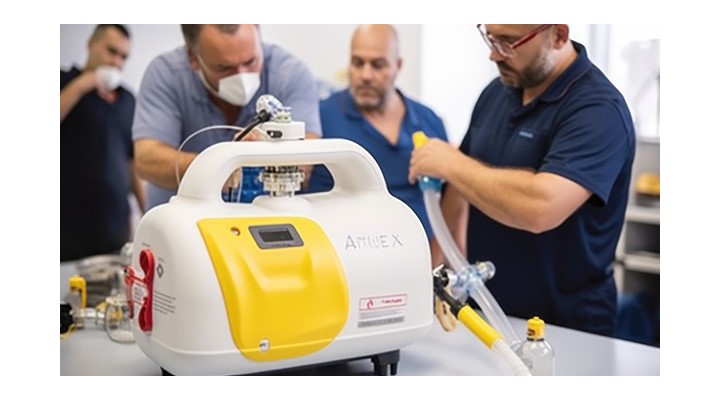







-160x160-state_article-rel-cat.png)
